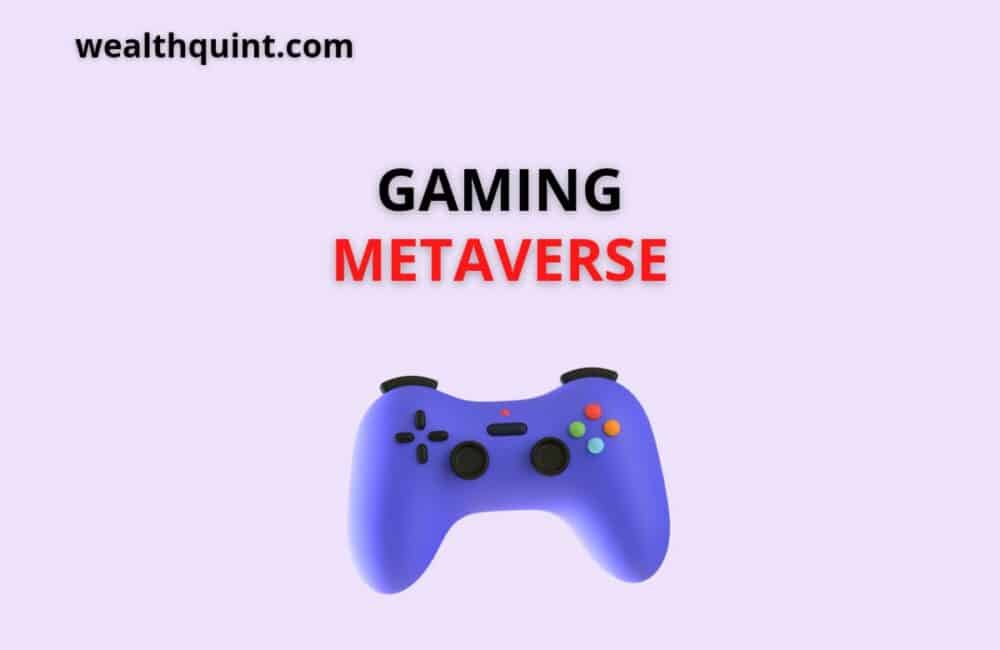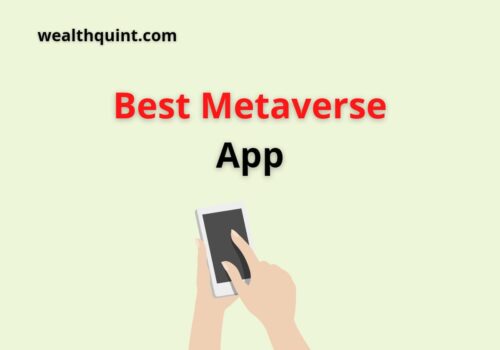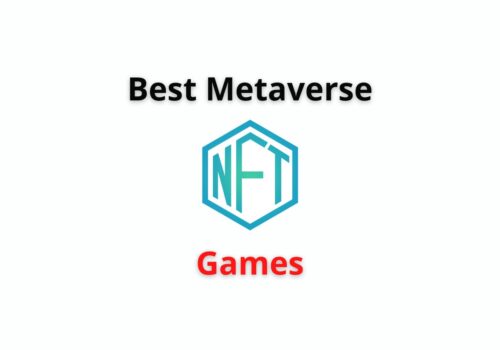Virtual reality has always been a natural fit for the gaming industry. Minecraft and Second Life, both early immersive games in 2D, incorporated elements of the now-unfinished metaverse – such as 3D avatars, world-building, and observation as gameplay – into their experiences.
Game development is finding a new home, thanks to the efforts of companies such as Meta and Epic Games to create a connected universe of virtual realities.
What Is Gaming Metaverse?
Gaming in metaverse refers to games played in a simulated digital environment that combines virtual reality, augmented reality, and blockchain concepts with concepts from social media to create a rich platform for user interaction.
Today, gaming companies are racing to develop the components that will eventually form the metaverse – an open, persistent virtual network that can serve as an extension of the real world, and this virtually real-world experience in gaming is known as Gaming Metaverse.
Furthermore, the race between video game companies makes perfect sense. Any virtual reality game, after all, has the potential to become a part of the metaverse shortly.
The key will be to link all of the games together so that users can move from one to the next seamlessly while maintaining their same avatar and accessories if they choose to do so.
What Does Gaming Look Like In The Metaverse?
Metaverse can be defined as an interoperable and unified virtual reality space where users can interact with one another and the digital world around them through advanced human-computer interaction hardware and software.
This raises the bar for virtual reality gaming to incredible new heights. At the moment, virtual reality gameplay is available as standalone applications that can be installed on your desktop, VR gear, or mobile phones to allow you to participate in an immersive rendition of traditional video games in virtual reality.
Most notably, the in-game universe now appears as a three-dimensional virtual reality world that you can view in 360-degrees and almost “touch” with your sense of perception thanks to a realistic virtual reality experience.
Metaverse is a concept that extends this idea even further. It asserts that it is possible to connect multiple virtual reality games – and, indeed, any VR application or space – to create a single interoperable experience for users.
Also Read: Top 15 Metaverse Games Play-to-Earn
Metaverse And Gaming Are Inextricably Linked
Battle royale game Fortnite, which is available to play online and across platforms and is completely free to play, can easily be considered a “proto-metaverse.” Regular players make up a large proportion of the game’s population, and they are eager to attend real-world events and interact with brands in novel ways.
Roblox is an online game platform and game creation system that allows people to create their worlds and games within the Roblox metaverse, a larger collection of virtual worlds.
Brands such as Nerf, Hot Wheels, and Sony Music collaborate with Roblox to create immersive worlds to better connect with their customers and prospects.
Gaming Metaverse Characteristics
Following are the characteristics of gaming that will be relevant in this context:
1. Games As Platforms
The gaming experience will become much more flexible due to this development. Users can contribute to the virtual world by creating their content, creating sub-games within a game, and generally treating the gaming environment as a platform for various other activities.
2. Social Gaming
Metaverse is by its very nature a social environment, which distinguishes it from the traditional solitary virtual reality experience. With the ability to invite friends from the real world, interact with other players, and form relationships with other players, among other things, multi-player gaming will take on a whole new dimension.
3. Play To Earn
Gamers in the metaverse must engage in gameplay to earn money. Aside from adhering to linear storytelling and rules, players can participate in financially rewarding activities.
As an example, they might sell the assets they have won in the game to other users in exchange for cryptocurrency.
4. Portability Of Game Assets
The interoperable architecture of the metaverse may make it possible to transfer game assets between computers.
NFT rules would govern persistent ownership of weapons or avatar enhancements obtained in one game and transferring them to another.
5. Mixed Reality Experience
Using augmented reality and virtual reality, Metaverse creates a more organic experience. Users can move from augmented reality group text to mixed reality board games to a full-blown virtual reality world within the same session.
6. Realizing The Metaverse’s Potential
The potential of the metaverse is virtually limitless. In-game recreations of new experiences — such as an event, an NFT, or obtaining player support — can be created to increase customer engagement. It is possible to achieve frictionless operation.
According to Matthew Ball, a venture capitalist and one of the most prominent futurists working on the metaverse concept, for it to thrive, it requires new technologies, protocols, companies, innovations, and discoveries, among other things.
“There will be no clear distinction between the ‘Before Metaverse’ and the ‘After Metaverse.’ As different products, services, and capabilities integrate and meld with one another over time. It will gradually take shape over time. “He makes a prediction.
Emerging technologies such as 5G will contribute to the speed and power that will allow digital worlds to function properly.
To provide latency-free experiences through virtual and augmented reality, significant technological advancements must be made in digital device technology.
7. Metaverse And Player Support
In an era where the games industry is increasingly embracing the metaverse, brands must establish a strong digital customer service foundation. It is necessary to take a two-pronged approach.
Making that frictionless player and customer experience possible will necessitate the establishment of support teams within the metaverse that will have the autonomy to interact directly and spontaneously with customers.
Members of your player support team are required to possess a specific set of characteristics. First and foremost, they must be compassionate. The metaverse is a whole new galaxy to discover, and players will have many questions as they do so.
Players will be accompanied into the cockpit by sympathetic agents who will patiently show them the way. Second, they must be technologically literate. With the metaverse come connected platforms and services, as well as an ever-increasingly complex web of technological interconnections.
Also Read: Difference Between Metaverse and Multiverse
Agents providing player support should be familiar with various technologies and be able to troubleshoot interactions between them.
Support your team with technology if you want to take your support to the next level. Artificial intelligence and machine learning will be used by brands that do this correctly to track trends, respond to specific requests, and better understand their customers.
A conversational bot in-game, for example, could easily contribute to an immersive experience while also guiding players and freeing up time for agents, as demonstrated in this video.
More than that, these technologies can be applied to content moderation, which is essential for keeping the metaverse free of harmful or misleading content.




